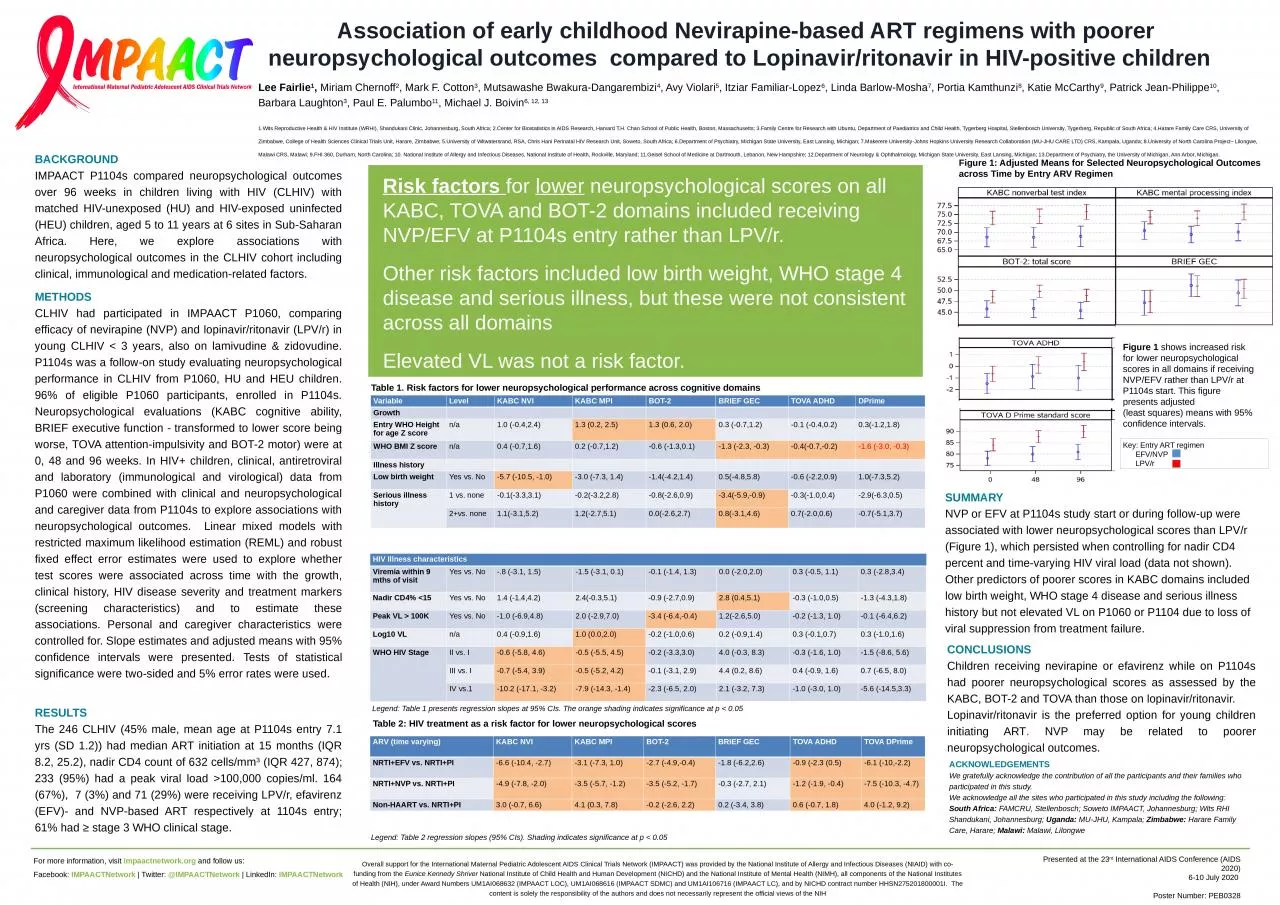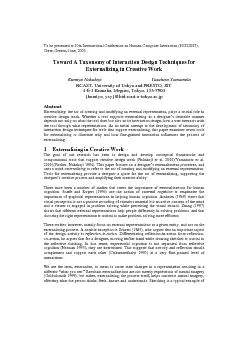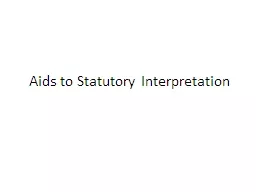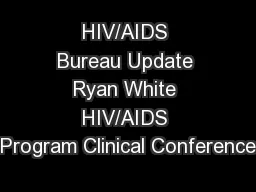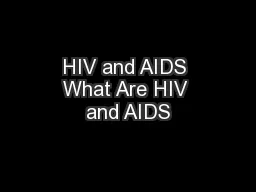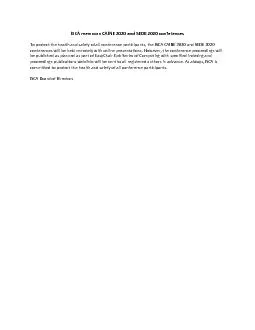PPT-Presented at the 23 rd International AIDS Conference (AIDS 2020)
Author : lucinda | Published Date : 2024-01-29
610 July 2020 Poster Number PEB0328 Association of early childhood Nevirapinebased ART regimens with poorer neuropsychological outcomes compared to Lopinavirritonavir
Presentation Embed Code
Download Presentation
Download Presentation The PPT/PDF document "Presented at the 23 rd International AI..." is the property of its rightful owner. Permission is granted to download and print the materials on this website for personal, non-commercial use only, and to display it on your personal computer provided you do not modify the materials and that you retain all copyright notices contained in the materials. By downloading content from our website, you accept the terms of this agreement.
Presented at the 23 rd International AIDS Conference (AIDS 2020): Transcript
Download Rules Of Document
"Presented at the 23 rd International AIDS Conference (AIDS 2020)"The content belongs to its owner. You may download and print it for personal use, without modification, and keep all copyright notices. By downloading, you agree to these terms.
Related Documents

